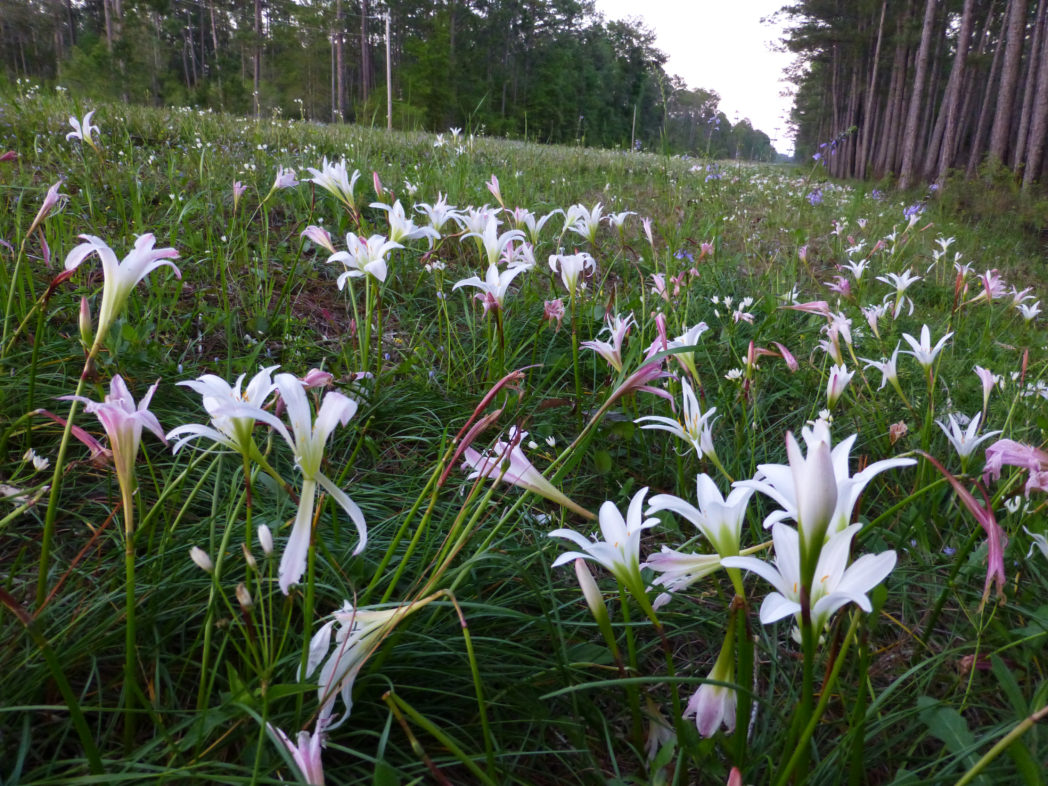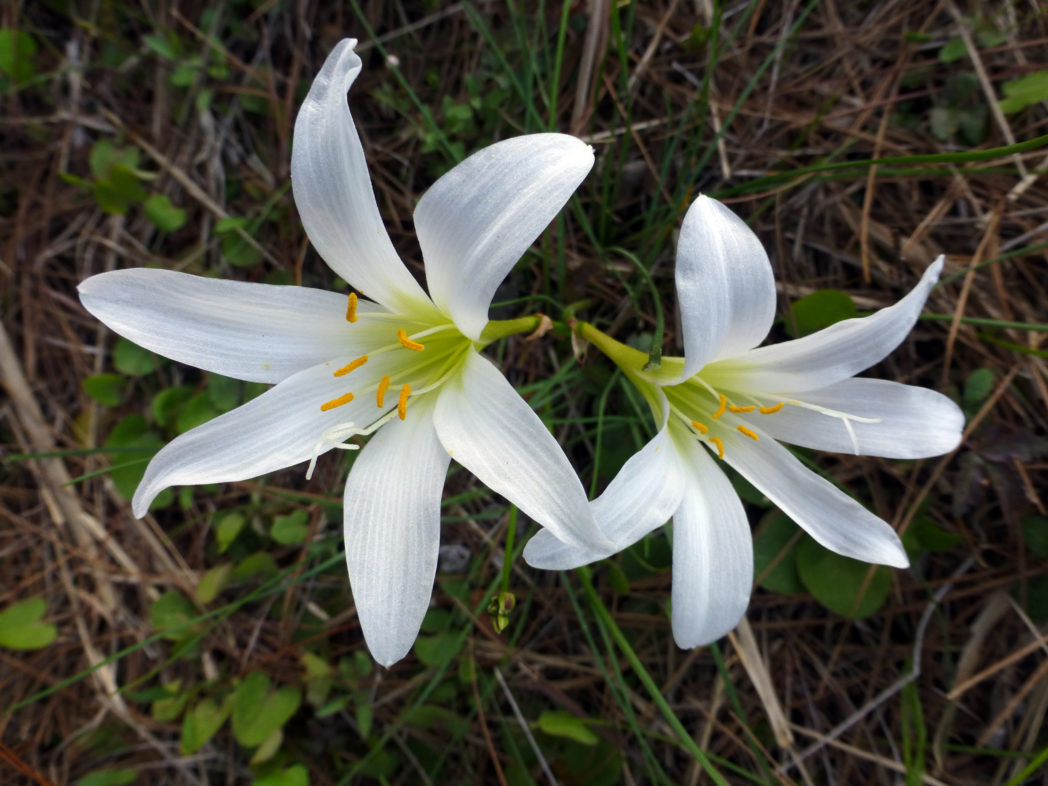Rain lily
Pictured above: Rain lilies (Zephyranthes atamasca) by Eleanor Dietrich. Click on terms for botanical definitions. View post as a PDF.
Rain lily (Zephyranthes atamasca) is a short-lived perennial wildflower that occurs naturally in slope forests, moist flatwoods, river swamps and floodplains, shaded limestone outcrops, along roadsides and in rural areas. It is a threatened species in Florida. As the common name suggests, rain lilies typically bloom after a rain shower. Flowering can occur in late winter through early summer, but their tendency to bloom around Easter has earned them another common name — Easter lily.

Its showy, solitary flowers are white (although sometimes tinged with pink), and have bright yellow stamens and 6 distinct lobes that unite at the base to form a funnel. They are born on leafless stalks. Leaves are basal, and linear or grasslike in shape. They arise in clumps.
Family: Amaryllidaceae (Amaryllis family)
Native range: Panhandle, north and central peninsula
To see where natural populations of Rain lilies have been vouchered, visit www.florida.plantatlas.usf.edu.
Hardiness: 8A–10A
Soil: Rich, acidic to slightly alkaline soils
Exposure: Full sun to partial shade
Growth habit: 6–18″ tall with 1–2′ spread
Propagation: Seed, division of bulbs
Garden tips: Although rain lilies prefer moist soils, they do not do well in soils that are constantly saturated. They can, however, withstand sustained drought. They are a very hardy species and are a great replacement for the many non-native lilies that are commonly sold in big box garden centers. They make for a nice mass planting, and also work well in lawns as they can be mowed. Rain lilies can be propagated by seed or division of bulbs.
Caution: All parts of this plant are poisonous if eaten.
Rain lilies are often available at nurseries that specialize in native plants.Visit PlantRealFlorida.org to find a native nursery in your area.

